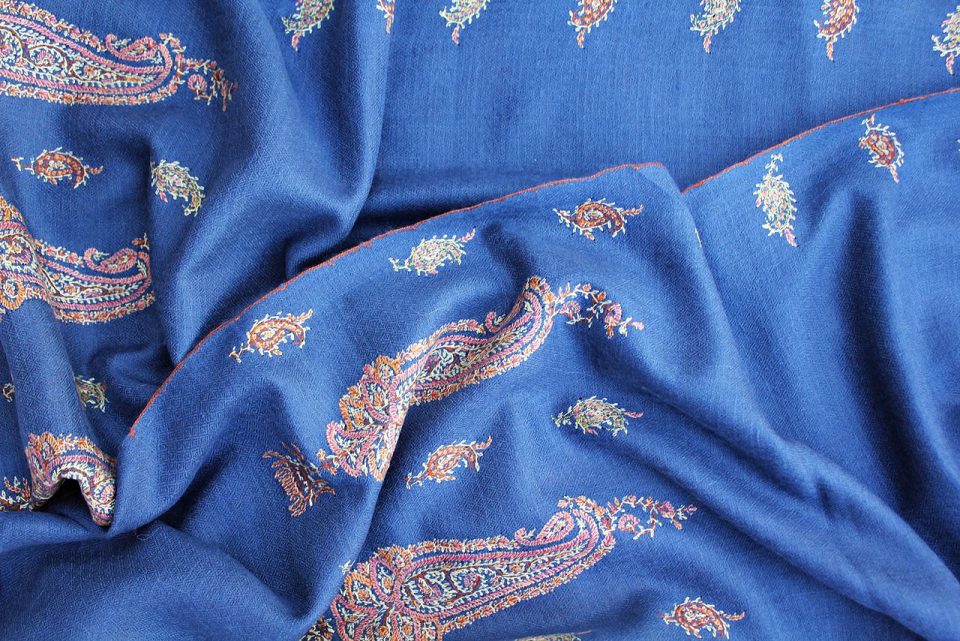PASHMINA
Pashmina is a shawl made from fine quality goat’s wool. It refers to a fine variant of spun,the animal hair fibre. The word pashm means “wool” in persian. But in kashmir, pashm referred to the raw wool of domesticated goats. It may refer either to material or to variants of the kashmir shawl.
Raw and de-haired Pashmina wool
The material gained prominence through its use in kashmir shawl. In early ages, Pashmina was a royal symbol and known as a fibre of kings. During the 15th century, weaving of Tapestry shawls was introduced from Turkistan by Zain-ul-Abdin, the ruler of Kashmir. Exquisitely soft, light weight, and still warm, this royal luxury was patronized by successive rulers like Akbar. Later on in the 19th century, Pashmina became a craze in France after Napoleon presented an exotic shawl to the Empress . Raw Pashmina is exported to kashmir.All the steps from spinning to weaving and finishing are traditionally carried out by specialized craftsmen. The major center of production of pashmina fabric production is in the old district of the city srinagar.
Pashmina shawls were also vital additions to a wealthy women’s dowry in India, Pakistan and Nepal. Kashmiri shawls became coded as women’s luxuries. They acquired the status of heirlooms,worn by a girl on her wedding. In France ,the pashmina kashmir shawl gained status as a fashion icon through Empress Josephine’s.
Goats used for pashmina shed their winter coat during spring. One goat sheds approximately 80-170 gram ( 3-6 ounces)of the fibre. The goats naturally shed their undercoat which regrows in the winter. The traditional producer of pashmina wool in Ladakh region of Himalayas is a people known as Changpa.
The pashmina fiber is one of the finest fibers in the world. It is an expensive resource in the textile industry. The world wide total production of pashmina fiber is about 10,000 to 15’000 tons/annum. The major fibre producing countries are India, China,Mongolia,,Iran, Afghanistan, and Nepal. Pashmina scrafs, shawl, stole and wrap is an indispensable women’s fashion accessory. The shawl which is banned is Shahtoosh and not the Pashmina shawl. As stated earlier Pashmina shawl is not banned at all. It is produced from the high altitude of mountain goats.





